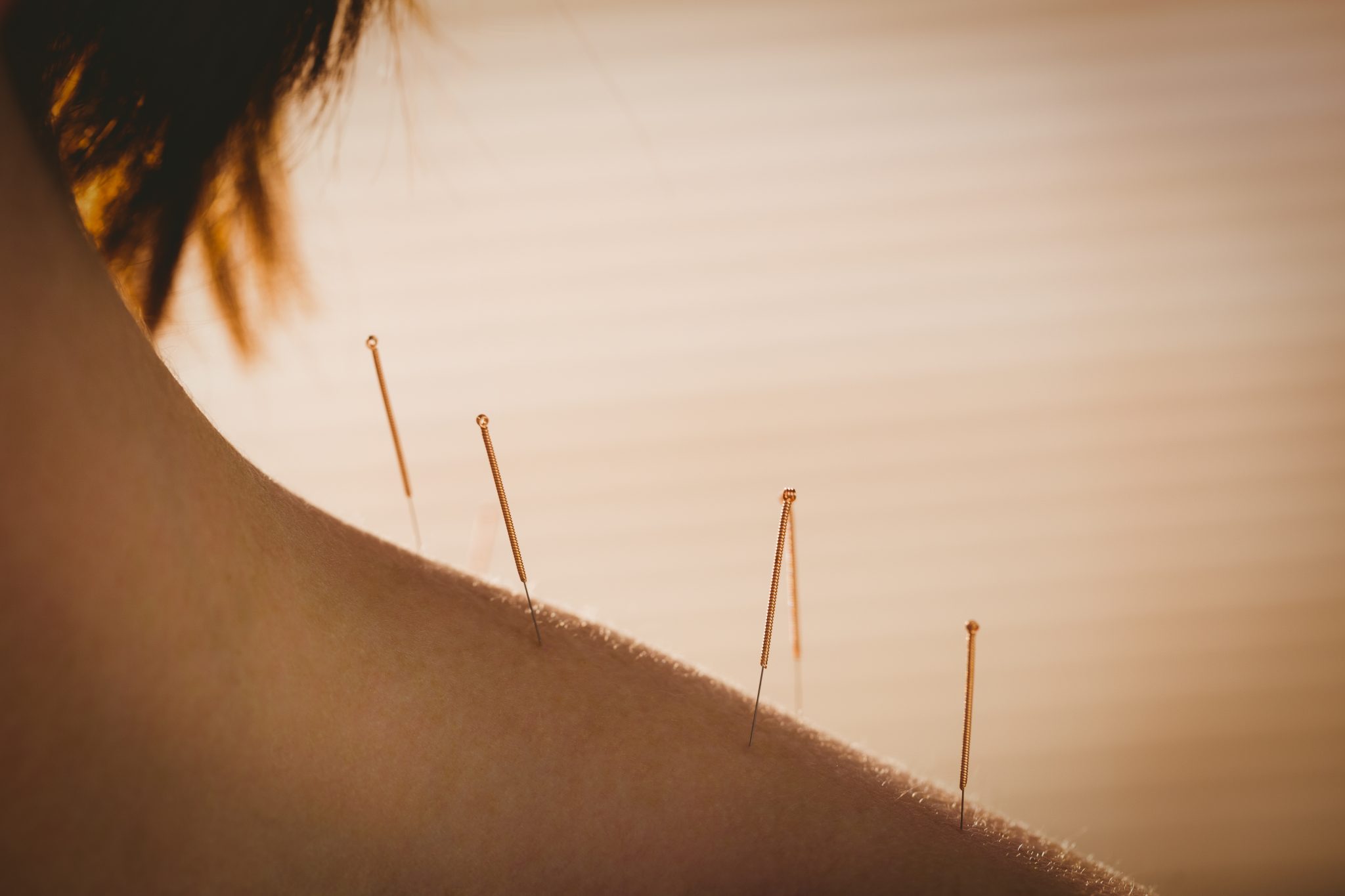
Electroacupuncture for Pain and Infertility
Have you heard of electroacupuncture? It’s often also referred to as electrostimulation or estim for short. Electroacupuncture is a powerful modality for treating pain, infertility, and even women’s health.
Electroacupuncture is similar to traditional acupuncture in that needles are inserted in specific points to activate specific meridians during a treatment. Additionally, with electroacupuncture the practitioner uses small clips to attach the needles to a special device generates electric pulses. The frequency and intensity of the electric pulse can be adjusted via the estim device, depending on the condition that is being treated.
If thoughts of Frankenstein appear in your mind, fear not. Electroacupuncture does not hurt. There is no pain. However, you may experience a slight tingling sensation or the feeling of a pulsation or tapping on your skin. An electroacupuncture treatment lasts 25 to 30 minutes and in most cases, any tingling or pulsing sensation will subside during that time so that it may not even be perceptible by the time the practitioner re-enters the room to remove everything.
From a methodological standpoint, electroacupuncture works by clearing out blockages in the meridians and promoting circulation of Qi and blood. According to Chinese Medicine, pain is often due to a stagnation of Qi and/or blood, which manifests as discomfort and sometimes impairment of the affected body part.
Research has shown that electroacupuncture effectively treats the below conditions:
- knee pain
- elbow pain
- neck pain
- neck and shoulder pain
- dysmenorrhea (menstrual pain)
- PCOS (polycystic ovarian syndrome)
When it comes to pain management, electroacupuncture works by stimulating the body’s production of endogenous opioids, serotonin, and norepinephrine — these are the feel good chemicals which block pain perception and reduce inflammation. When performed properly, electroacupuncture significantly alleviates acute and chronic pain and has a longer lasting effect than the use of pharmaceuticals. Furthermore, there are limited side effects to electroacupuncture, such as occasional bruising, bleeding, and soreness. Plus, treatments balance the nervous system and promote relaxation, so patients experience overall improved quality of life.
Additionally, at Naturna we are specialized in the use of electroacupuncture for fertility. Electroacupuncture can improve egg quality, improve embryo quality, and improve pregnancy rates after embryo transfer for IVF patients.
If you’d like to learn more about electroacupuncture and book a treatment with one of our skilled practitioners, please contact us today.
References
Aranha, M., Müller, C., & Gavião, M. (2015). Pain intensity and cervical range of motion in women with myofascial pain treated with acupuncture and electroacupuncture: a double-blinded, randomized clinical trial. Brazilian Journal of Physical Therapy, 19(1), 34-43.
Armstrong, K., Gokal, R., Chevalier, A., Todorsky, W., & Lim, M. (2017). Microcurrent Point Stimulation Applied to Lower Back Acupuncture Points for the Treatment of Nonspecific Neck Pain. Journal of Alternative and Complementary Medicine, 23(4), 295-299.
Jo, J. & Lee, Y. (2017). Effectiveness of acupuncture in women with polycystic ovarian syndrome undergoing in vitro fertilisation or intracytoplasmic sperm injection: a systematic review and meta-analysis. Acupuncture Medicine, 35(3), 162-170.
Li, X., Zhou, K., Zhang, E., Qi, Z., Sun, W., Xu, L., Xu, J., Cai, Y., & Wang, R. (2014). Therapeutic effect of electroacupuncture, massage, and blocking therapy on external humeral epicondylitis. Journal of Traditional Chinese Medicine, 34(3), 261-266.
Lian, F., Chen., C., & Xiang, S. (2015). Improvement of the oocyte quality with electroacupuncture in infertility patients of kidney deficiency pattern. Zhongguo Zhen Jiu, 35(2), 109-113.
Qu, F., Li, R., Sun, W., Lin, G., Zhang, R., Yang, J., Tian., L., Xing, G., Jiang, H., Gong, F., Liang, X., Meng, Y., Liu, J., Zhou, L., Wang, S., Wu, Y., He, Y., Ye, J., Han, S., & Han, J. (2017). Use of electroacupuncture and transcutaneous electrical acupoint stimulation in reproductive medicine: a group consensus. Journal of Zhejiang University – Science B, 18(3), 186–193.
Shim, J., Jung, J., & Kim, S. (2016). Effects of Electroacupuncture for Knee Osteoarthritis: A Systematic Review and Meta-Analysis. Evidence-Based Complementary and Alternative Medicine, eCAM, 3485875.
Yang, B., Cui, W., & Li, J. (2015). Effects of electroacupuncture intervention on changes of quality of ovum and pregnancy outcome in patients with polycystic ovarian syndrome. Zhen Ci Yan Jiu, 40(2), 151-156.
Yu, S., Lv, Z., Zhang, Q., Yang, S., Wu, X., Hu, Y., Zeng, F., Liang, F., & Yang, J. (2017). Electroacupuncture is Beneficial for Primary Dysmenorrhea: The Evidence from Meta-Analysis of Randomized Controlled Trials. Evidence-Based Complementary and Alternative Medicine, eCAM, 1791258.
Zhang, R., Lao, L., Ren, K., & Berman, B. (2014). Mechanisms of Acupuncture-Electroacupuncture on Persistent Pain. Anesthesiology, 120(2), 482–503.


